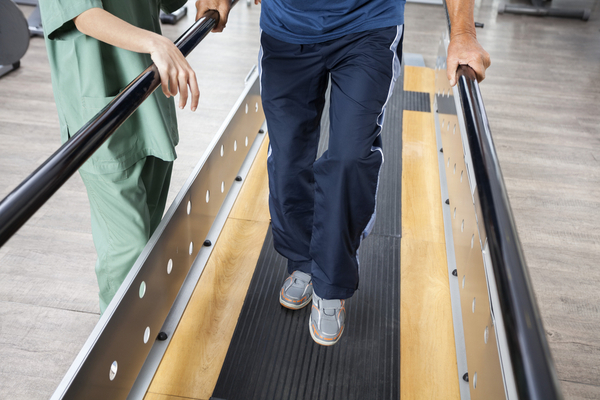
There are many components to improving one’s balance. Balance can be affected from poor eyesight, inner ear dysfunction, musculoskeletal weakness/stiffness, and neurological impairments. A Physical Therapist can help you to rule out your balance causes and impairments to help you gain more confidence and support in walking.
Proper balance is paramount for daily function in life. Balance problems can make a person timid to move and perform simple daily tasks. This inactivity will cause loss of muscle strength and proprioception. Movement is very important for maintaining or correcting balance.
Physical therapists have special tests we use to measure one’s balance impairments and baseline for improvement. We can address your movement impairments and work to provide what you need to reduce your fall risk. Once we understand the impairment we will develop a program to improve your muscles strength or joint mobility or posture all of which can affect your balance. Strengthening the muscles in the hips and core can be especially helpful in improving balance.
There are two types of balance, static and dynamic. Static is standing still. Some people have a hard time with standing still without holding on to a walker or cane. Dynamic balance is with walking, transferring, changing positions, or navigating obstacles. Physical Therapists will address and work to improve both static and dynamic balance through specific exercises that challenge balance and help the body adjust and improve. Some of these exercises are standing on one leg and tandem walking (one foot in front of the other).
One thing you may not think about is what kind of footwear you have or specific hazards or obstacles like loose rugs in your home that can increase your risk of falling. When you become aware of addressing these specific problems it can help to regain your confidence in your balance and your ability to move safely in your house. If you walk with any assisted device it is very important to learn the proper standing position and walking position to use these devices safely and with good posture to reduce fall risk.
For those who have Diabetes this can mean loss of sensation in the feet, which can hinder ones balance. Physical therapists can work to improve your body awareness and proprioception to give you a better sense of balance in standing and walking.
Stretching is also a vital part of improving posture and flexibility to allow you better movement in standing, squatting, sitting, walking, bending. Learning to stretch to improve these areas can improve your posture which will also improve your balance.
Talk to our physical therapists at IMOC for the safest, fastest, and most effective way possible to reach your goals of better balance.


